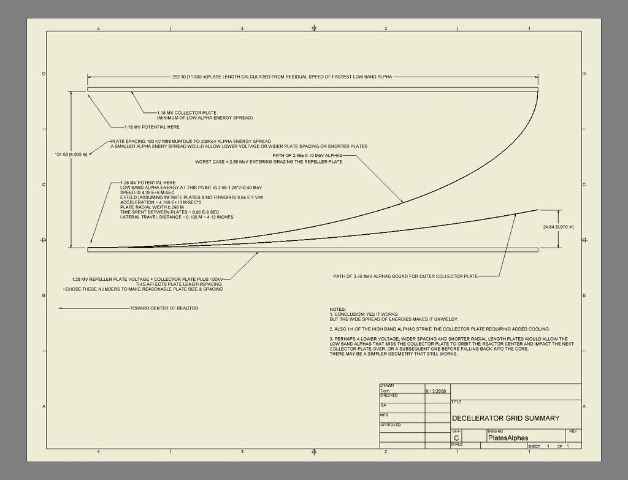That's exactly what I've been trying to do (except I think it's two bands, not three - the low band (two alphas per fusion) has a spread in energy, but the high band (one alpha per fusion) is pretty uniform). I figured I could use lateral electric fields and the magrid shadows to do it in a reasonable amount of space, where using magnetic fields would be more difficult. I'm lazy/busy with research, so I haven't done all that much calculating...ravingdave wrote:I've been wondering if something like a mass spectrometer design could be used to seperate the alphas by energy into three distinct bands aimed at three distinct collectors. So far all my ideas along this line require impractically large vacum vessels, but still, the mass spectrometer seperates particles by mass, and surely a similar idea could seperate same mass particles by velocity ?
I suppose you could use a parabolic electric reflector to collimate all the alphas into a beam, like in a DFP drive - but then you increase the magrid losses because some of the alphas make more than one pass. Plus you need a very long vacuum chamber (though it doesn't have to be particularly big in the other two dimensions)...
Or you could do as was suggested earlier - chuck the repeller spike and try to collimate the alphas in each gap by shaping the electric field. Somehow that sounds fishy to me, but it's late at night so I can't tell. Besides, that one DOES require a really large (and funny-shaped) vacuum chamber to pull off magnetic separation...
Wasting the extra energy from the high-band alpha as heat isn't all that bad - it's only a little over half the expected magrid loss...
